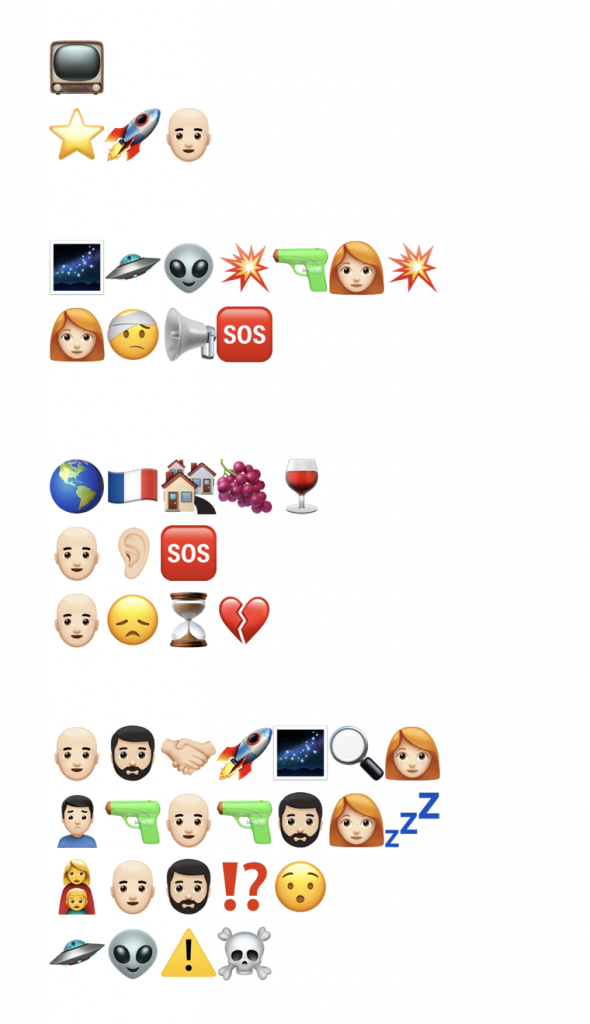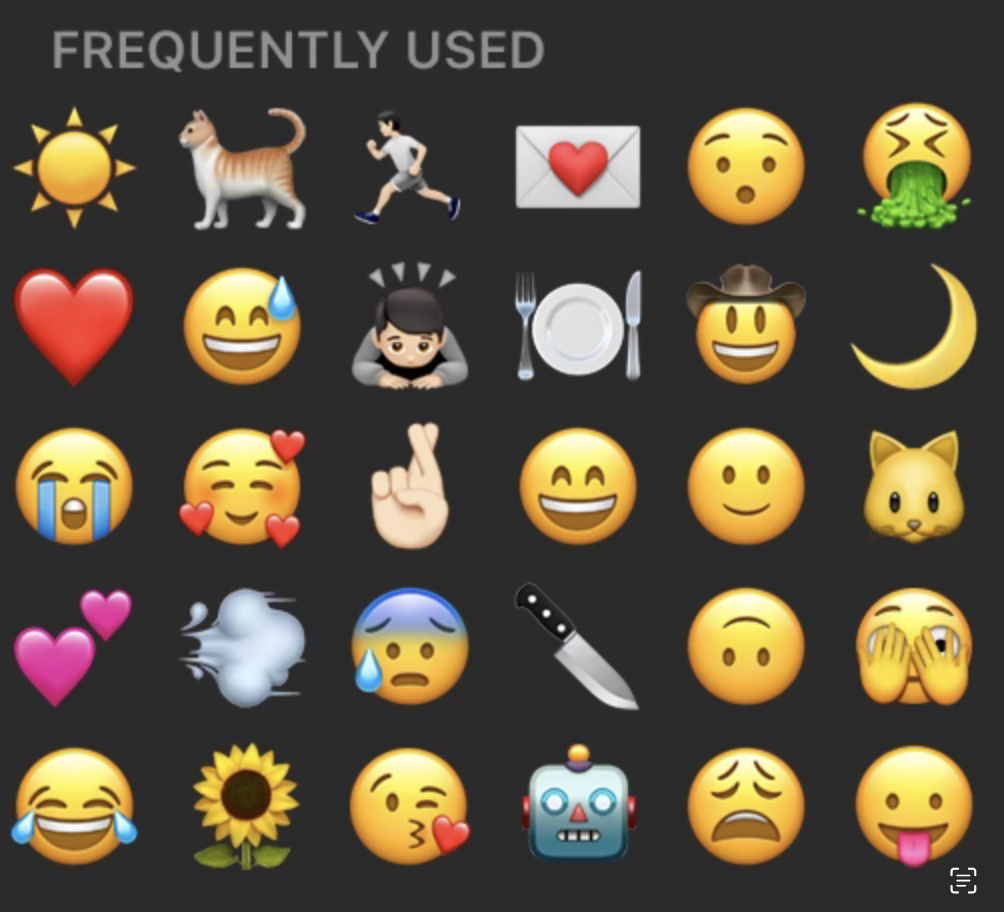This week’s task involves describing the title and plot of a movie, book or TV show using only emojis. Using the built-in emoji keyboard on my iPhone, I’ve shared my attempt below.

Reflection
Did you rely more on syllables, words, ideas, or a combination of all of them?
I found myself relying more on ideas to construct meaning through the use of emojis. There was one instance in my story where I relied on the literal word meaning of one of the emojis.
Many of the ideas within my story were representative of characters, actions, thoughts, emotions. Line by line, I attempted to construct meaning by juxtaposing several different emojis together, with each new line representing a new idea. I found it interesting to reflect on Kress’ (2005) observation that information is organized and coded through the ordering of lines and syntax (p. 7). Despite working in a visual mode, I applied the conventions of written verbal communication to attempt to organize my message and construct meaning.
Did you start with the title? Why? Why not?
I did start with the title for my story; which may have been out of habit, as I’m accustomed to lead with a title when sharing a story (or really any information for the most part). Another reason for including the title (depending on how the reader interprets it) serves to provide some high-level context for the preceding lines which describe the plot of the story.
Did you choose the work based on how easy it would be to visualize?
Yes and no. I did select this work based on my familiarity with the larger works that it’s connected to, however, this was my first time viewing this particular unit of the work and so I wasn’t sure how easy it would be to translate the plot into emojis.
I initially took it upon myself to try to translate the plot of the work into emoji in real-time, but actually found it quite hard to keep up. There were moments where I would catch myself spending minutes trying to find the right emoji in my keyboard. For the sake of enjoying the work, I decided to hand-write out my observations of the plot and translate that into emojis afterwards.
At first, I didn’t expect how challenging it would be to translate this story into emoji, given that I use emoji on a regular basis in my day-to-day use of text messaging. I now realize that in those instances, I rely on relatively small range of emojis in my day-to-date communication.

Closing Thoughts
While constructing my story, I came across several emojis that I haven’t encountered before, which speaks to the evolving visual language of emoji that changes with each new version of Uncicode (Broni, 2022). In my typical use of emoji, it’s very rare that I rely solely on the visual to convey my message. Rather, I depend on the use of written words in conjunction with emoji to provide additional context and to enhance the original meaning of my message. It’s true that without one or the other, the message can still become decoded, but it’s meaning becomes a bit more vague (depending on the context of where the message is being shared).
The pairing of text and visual might be essential in some contexts, for example, in the case of someone reading the message with a screen reader. In those instances, a person with a screen reader will interpret emojis with the literal alt-text information encoded within each one (Mace, 2021). Without any other written contextual information, attempting to convey new meaning by juxtaposing emojis might not translate in the same way it would for a sighted person. This reminds me of Kress’ (2005) point on the affordances of combining multiple modes (visual and textual) to produce new meaning, as well as the social contexts and conventions that inform how meaning is created. In fact, Zaltzman (2020) addresses this directly by discussing the use of eggplant emoji, which, depending on your linguistic or cultural context, is no longer solely understood by its literal interpretation as a vegetable.
References
Broni, K. (2022, July 13). New emojis in 2022-2023. Emojipedia. https://blog.emojipedia.org/new-emojis-in-2022-2023/
Kress, G. (2005), Gains and losses: New forms of texts, knowledge, and learning. Computers and Composition, 2(1), 5-22.
Mace, D. (2021). Do emojis and accessibility work together? Tiny. https://www.tiny.cloud/blog/emojis-and-accessibility/
Zaltzman, H. (Host). (2019, July 13). New rules (No. 102) [Audio podcast episode]. In The allusionist. https://www.theallusionist.org/new-rules
Hi Sarah, thank you for sharing your emoji story! Here is my attempt at translating your emojis:
Tv show
Rocket man
Aliens from outer space are fighting with girl
girl gets injured and needs help
France
a man hears the cry for help
man is sad because there is not enough time/takes too long to reach girl and help her
man partners up with another man and travels to space to try and find girl
the two men find the girl unconscious but encounter another person and are suspicious of them
the other person turns out to be a mom and son and the two men are confused
the aliens find out and everyone dies
How did I do? I apologize for the terrible translation because I have no idea what show this is referring to haha
Hi Phiviet, thanks for your response!
You captured the entire plot perfectly!
My emoji story was based on an episode of Star Trek: Picard, specifically episode 1 of season 3.